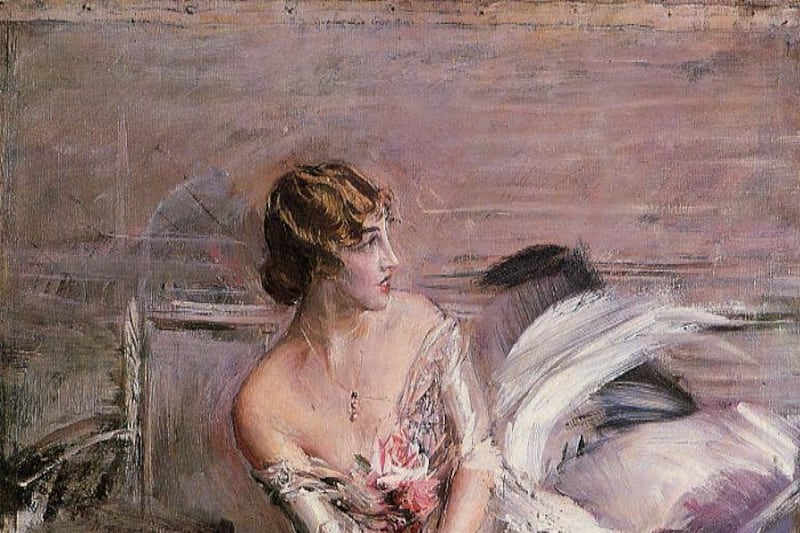At his mother’s wake in Cavan the other night, I got talking to a friend about the unwritten rules of this great Irish institution, as gently policed by local elders.
At one point, for example, my friend had brought a plate of sandwiches into the room where the departed lay. This is not the done thing. While he had one himself, the sandwiches were quietly removed.
Someone else brought a baby into the room, and that too was deemed contrary to custom. Older children were welcome to come and go, if they wanted. Not so infants in arm.
I remembered my own first wake experience when I was about five, creeping into the room where my grandmother was laid out and, after a peek around the door, fleeing back downstairs.
The woman who enchanted Proust – Frank McNally on the rise and fall of Gladys Marlborough
‘He never said that’: Frank McNally is tired of hearing a phantom WB Yeats quote
Fighting Farney – Frank McNally on the battle for his hometown’s ‘western front’
Monumental misstep: Frank McNally on the ‘tragedy’ of a great Irish sculptor, John Hughes
But then there was my daughter, who when her maternal grandmother died and it was decided to bury her with a favourite pair of pearl earrings, volunteered to be the one to put them on the body and did so with calm assurance.
At the Cavan wake, as is general custom, they had covered up all mirrors and the TV screen. They hadn’t stopped any clocks, however, something that used to be common practice and maybe still is in places.
There were of course mountains of food, meanwhile, brought by friends and neighbours. The women of Ireland (especially) seem to have a deep, primal urge to feed people at funerals.
In any case, an Irish wake has more food than a Polish wedding. Leftovers in Cavan were donated to the local homelessness service, I’m told, and a great teapot and Pyrex dish amnesty is now under way, as owners and utensils are gradually reunited.
The wake house was on a narrow, rural side road. And one of things that impressed me was the traffic management, as a team of men in hi-vis jackets, wielding torches, directed us precisely where to park.
It didn’t look like a Garda operation, so I suspected the involvement of that other, martially-drilled body, the GAA. My friend wasn’t sure who it was. The operation had just fallen into place somehow.
Another thing that impressed him, he told me since, is the post-wake tradition whereby, as the cortege proceeded to church next day, shops along the route closed and shopkeepers stood outside to pay respects.
I remembered that at my mother’s funeral too. Even on the Protestant side of our Main Street, shopkeepers stood in vigil. It was very moving.
But back to the Irish wake, the keynote of which – at least when the deceased has lived long and well, as was the case in Cavan – is celebration. There is a brief suspension of jollity for the saying of the rosary, usually.
Then, no sooner have we lamented the awfulness of the human condition, Catholic-style – “To thee do we cry, poor banished children of Eve, to thee do we send up our sighs, mourning and weeping in this valley of tears” – than everyone goes back to talking, laughing, and eating.
It’s almost a century now since my fellow Monaghan man Patrick Kavanagh lamented the supposed demise of the traditional wake. And yes, some things he recalled have indeed died out.
In a chapter of The Green Fool entitled “Death and Funerals”, he described the old wake before the wake, when not just family but neighbours too would gather for the demise of the faithful departing.
At least one would be an amateur pathologist. But unlike college-educated pathologists, who only record the time of death after it happens, the skilled amateur had to record it an advance.
For “Red Pat”, Kavanagh’s local expert, a glimpse at the sickbed might be enough to declare: “He’ll not pass one o’clock.”
Less drastic predictions could be bad news. When an elderly patient revived once and Red Pat suggested he could live another week, according to Kavanagh, there was quiet despair:
“We didn’t want the man to live another week. It was a slack period in the neighbourhood and a wake and funeral would be a break in the monotony.”
Once death did occur, the moment was always witnessed. That was part of the reason for stopping clocks – to show the vigil keepers had done their job.
Thereafter, the prospect of “an old man or woman going on a cruise to eternity with baggage complete and passports in order” was cause for unbridled celebration.
This could be infamously raucous. A friend in Enfield tells me of a local case of Finnegan’s (or indeed Finnegans) Wake once, wherein a corpse was removed from the bed and its place taken by a prankster with drink on board, to scare mourners.
Which is just the sort of thing that led to the phasing out of the old alcohol-and-snuff wakes, in favour of the tea-and-sandwich variety.
But Kavanagh was premature when he suggested that “continental Catholicism” had ended the celebrations: “So the wake passed out and we all began to wear long faces.”
In his native south Ulster at least, the wearing of long faces at wakes continues to be optional. The celebratory aspect is still intact. And even in our more secular age, this part of death remains strangely life-affirming.
















